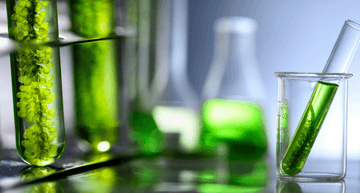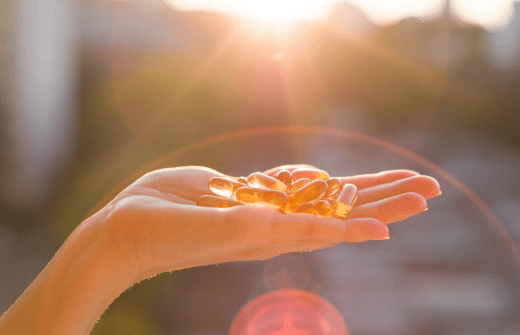The significance of vitamin D for human health, coupled with its alarming deficiency among the population, motivates many to turn to supplements, especially during winter months. While the market offers a wide array of vitamin D products, they vary significantly in terms of the type of vitamin D used (most commonly D2/ergocalciferol and D3/cholecalciferol), as well as the quality of raw materials and manufacturing processes.
Our aim is not to critique any specific sources used for production, but rather to delineate the basic differences between these sources (and consequently, the products on the market), facilitating informed decisions regarding vitamin D of animal or plant origin. We have synthesized the most up-to-date information on this molecule and its sources to provide clarity in this article.
Article at a Glance:
- First, a Brief Overview of Vitamin D
- Can Vitamin D Be Obtained Naturally?
- Alarming Deficiency of Vitamin D
- Choosing Quality Vitamin D Supplements
- Animal-Origin Vitamin D Supplements
- Extraction Process: Turning Lanolin into Vitamin D
- Animal Sourcing: Beyond Ethics, Considerations of Chemical Contamination
- Plant-Origin Vitamin D Supplements: Sustainability and Respect for Nature
- What Does Algae Mean?
First, a Brief Overview of Vitamin D
Vitamin D is a fat-soluble vitamin that functions more like a hormone in the body, regulating bone formation and the absorption of calcium and phosphorus from the intestine. It plays a vital role in maintaining bone health and also influences various physiological processes. Beyond bone health, vitamin D contributes to the proper condition of bones, teeth, muscles, immune function, and cell division.
Can Vitamin D Be Obtained Naturally?
The primary source of vitamin D is sunlight exposure on the skin. However, adequate synthesis in skin cells requires sufficient exposure to UVB radiation (with a wavelength of 280 - 315 nm), typically available in the Czech Republic from May to September between 11 AM and 3 PM in the Czech Republic. Geographical regions with a UV index consistently above 4 (such as during sunny summer days) offer better conditions for vitamin D synthesis. Several factors influence the amount of vitamin D synthesized in the body, including geographical location and individual lifestyle factors.
For many urban dwellers with fixed office hours, obtaining vitamin D naturally during summer may be challenging. In winter, fatty fish and other natural food sources become scarce, further exacerbating the deficiency.
Alarming Deficiency of Vitamin D
Vitamin D deficiency is widespread, necessitating supplementation beyond reliance on endogenous production or dietary sources alone. Many researchers advocate for increased daily intake recommendations, currently set at 15 μg/day (600 IU) for adults by the EFSA. The Society of Endocrinology recommends higher doses (1500-2000 IU) for all adults, including breastfeeding and pregnant women, especially those with proven deficiencies. Given the global COVID-19 pandemic and its impact on outdoor activities, higher doses are also recommended for children and adults.
Choosing Quality Vitamin D Supplements
The market offers plenty of products differing in both source and quality. Many supplements contain ambiguous ingredients, and prolonged consumption of such cocktails may have adverse health effects. It is challenging for consumers to navigate through the options, making it essential to prioritize quality when selecting supplements.
So what are basic sources for vitamin D production and the difference between them? → Understanding Vitamin D Sources
Animal-Origin Vitamin D Supplements
Lanolin, derived from sheep's wool, is a common raw material for vitamin D production in many products. While lanolin extraction is not harmful to sheep when done correctly, it is not suitable for individuals following a vegan lifestyle. Lanolin processing involves several chemical steps, and sheep wool may be contaminated with pesticides and other chemicals.
Extraction Process: Turning Lanolin into Vitamin D
The extracted wool is first washed in hot water with detergent to remove any parasites or impurities, resulting in crude lanolin. The fat component is then separated from the non-fatty component through a process called saponification, followed by centrifugation. Crude cholesterol is isolated using extractants and solvents. After further chemical treatment, 7-dehydrocholesterol (provitamin D3) is finally produced, which is chemically identical to the provitamin found under our skin. This provitamin interacts with sunlight to produce vitamin D3. In the final step, 7-dehydrocholesterol is exposed to light to form the stable form of vitamin D3 ready for supplement production.
Animal Sourcing: Beyond Ethics, Considerations of Chemical Contamination
Sheep wool may become contaminated with pesticides as it comes into contact with chemically treated plants on pastures. Additionally, the animals themselves and their skins are subjected to disinfection baths to ward off ticks and other pests.
Due to its fatty nature, lanolin can become rancid or oxidize upon contact with air. To extend its shelf life, many manufacturers add BHT (butylhydroxytoluene) to lanolin, the most widely used synthetic antioxidant for retarding the rancidity of oils and fats. While BHT is considered safe in adequate amounts, trace amounts may remain in human adipose tissue, and there are concerns about its potential health effects (the substance has been shown to be an animal carcinogen).
Plant resources - sustainability and respect for nature
Plant-based vitamin D supplements offer a sustainable and ethical alternative. Mushroom extract was traditionally used, but vitamin D2 from mushrooms is considered less effective than vitamin D3. Algae-derived vitamin D3, on the other hand, is chemically identical to lanolin-derived D3 and offers several benefits:
- Suitable for vegetarians and vegans
- Cultivated under controlled conditions without pesticides
- Sustainable production with minimal environmental impact (production process is not energy intensive)
- No unnecessary chemical additives
- Equivalent bioavailability to animal-derived vitamin D3
What Does Algae Mean?
The term "alga" originates from Latin and refers to 'seaweed' (with "algae" being the plural form of "alga"). Genetically unaltered (non-GMO) algae are utilized for the production of vitamin D, cultivated under meticulously controlled conditions and without the use of pesticides. Vitamin D3 derived from algae is chemically identical to that obtained from lanolin and can serve as a direct substitute. It exerts the same physiological effects in our bodies, yet it originates entirely from plants, offering the highest quality and purity.
In conclusion, choosing high-quality vitamin D supplements, particularly those derived from algae, ensures optimal health benefits without compromising ethical or environmental principles.

















